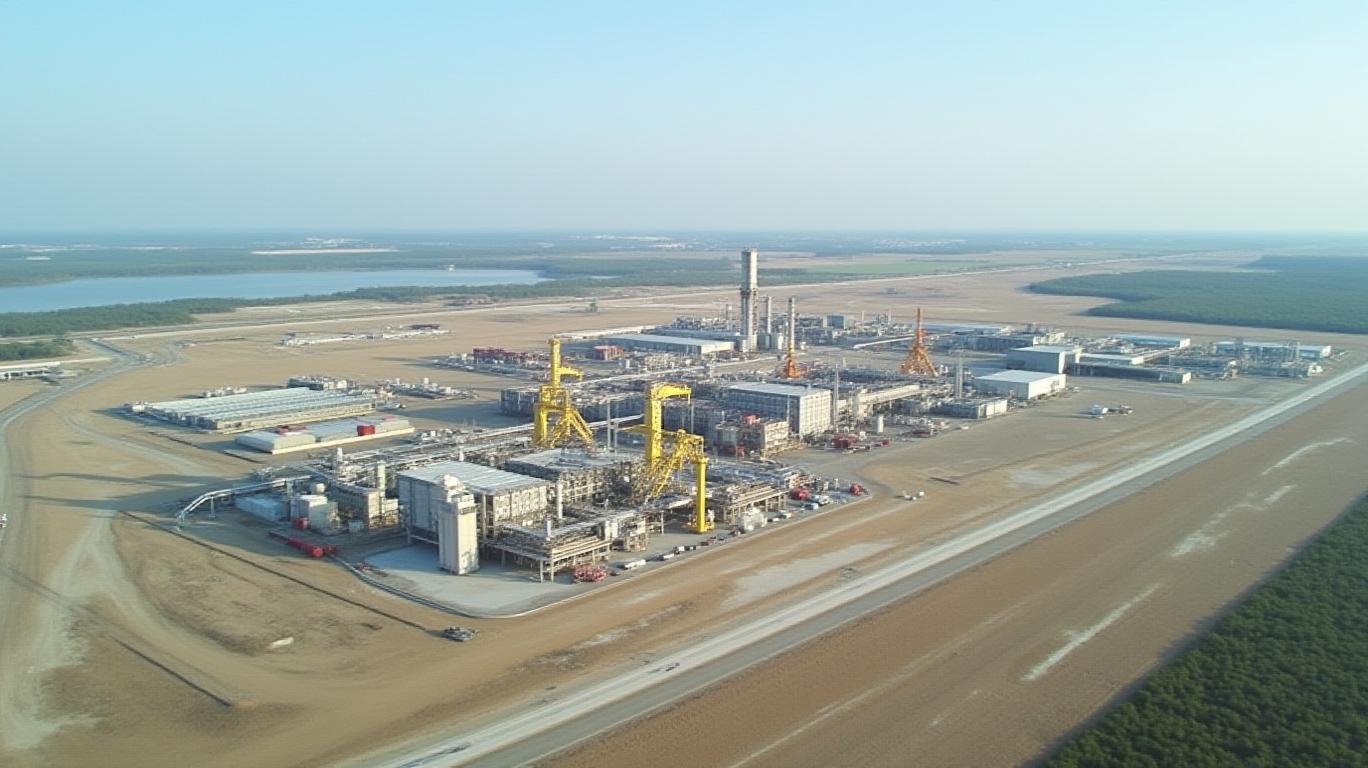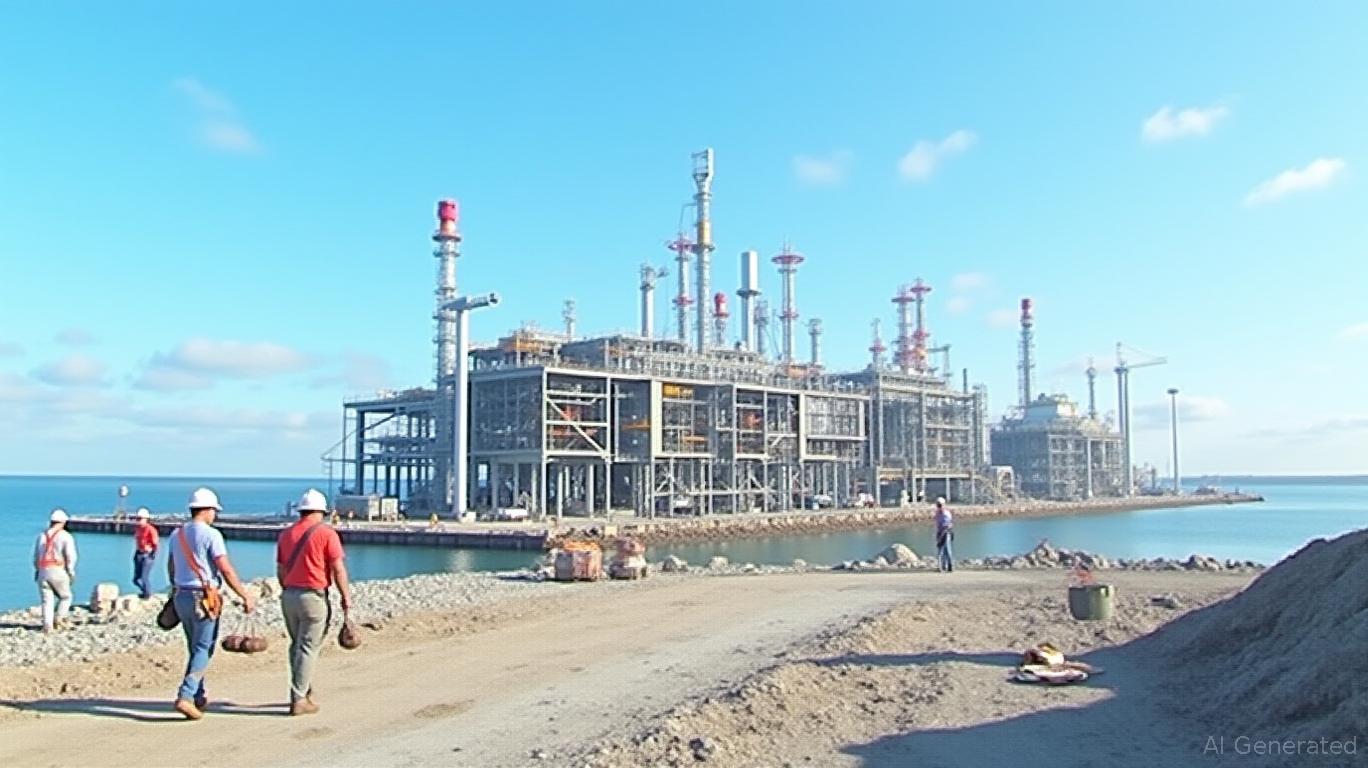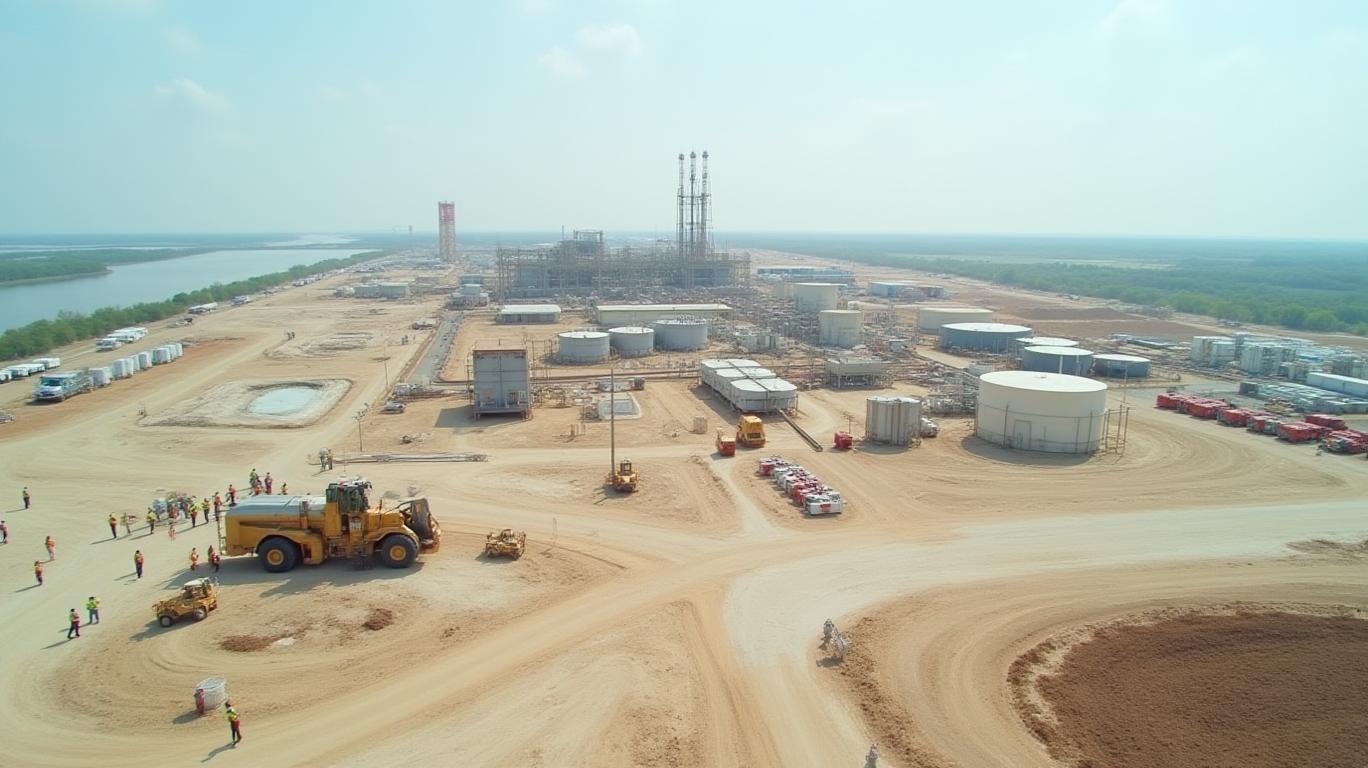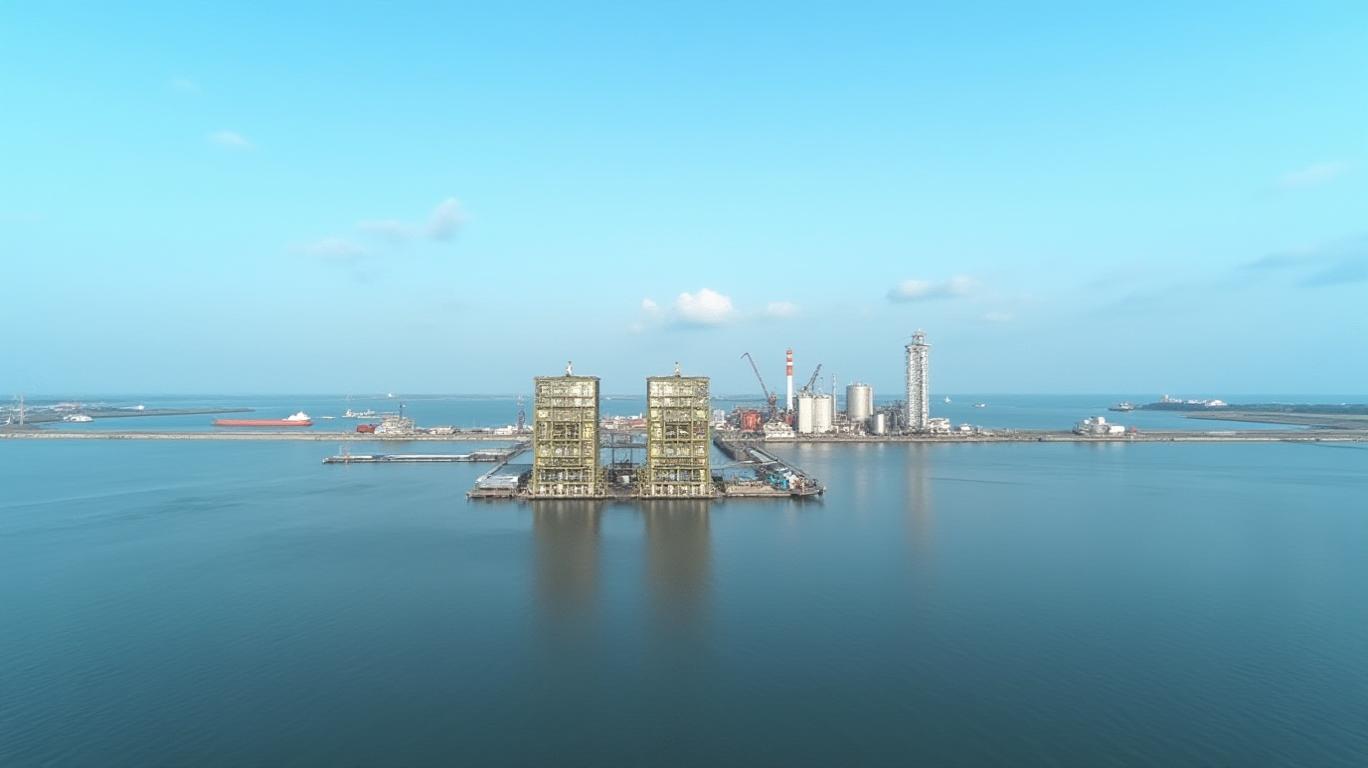Venture Global's CP2 LNG Project: A Regulatory Greenlight Amid Environmental Crosswinds
The U.S. Federal Energy Regulatory Commission (FERC) has recommended final approval for Venture Global’s CP2 LNG project, a milestone that could position the Louisiana-based terminal as the nation’s largest liquefied natural gas (LNG) export facility. With a capacity of 28 million tonnes per annum (MTPA), the project is poised to boost U.S. energy dominance and global LNG exports by 10%, but its path forward remains fraught with legal, environmental, and operational challenges.
Ask Aime: "Will FERC's approval of Venture Global's CP2 LNG project mean a boost for U.S. LNG exports?"

Regulatory Momentum and Strategic Significance
FERC’s recommendation, following a May 2025 final environmental impact statement (EIS), clears a major hurdle for the project. The agency concluded that cumulative air quality impacts from the terminal’s nitrogen dioxide (NO₂) and particulate matter (PM2.5) emissions would not exceed regulatory thresholds. This decision aligns with the U.S. Department of Energy’s (DOE) March 2025 authorization to export LNG to non-Free Trade Agreement (non-FTA) countries, unlocking access to markets like Japan and South Korea.
The project’s scale is staggering: a 36-train facility designed to process 3.96 billion cubic feet of natural gas daily, paired with a 91-mile CP Express Pipeline. If fully operational, CP2 would surpass rival terminals, such as Cheniere Energy’s Sabine Pass, and rival global competitors like Qatar’s RasGas.
Ask Aime: What's the status of Venture Global's CP2 LNG project in Louisiana?
Economic and Job Creation Potential
Venture Global has secured 20-year sales agreements with major buyers, including ExxonMobil, Chevron, and JERA, ensuring a stable revenue stream. The project promises 10,000 construction jobs and $2 billion annually in local taxes and royalties, a boon for Cameron Parish, where poverty rates exceed 93% of U.S. counties. CEO Mike Sabel emphasizes CP2’s role in solidifying U.S. LNG exports as a geopolitical tool, particularly as Europe and Asia seek reliable energy partners.
Environmental and Legal Crosscurrents
Despite regulatory progress, CP2 faces fierce opposition. Environmental groups cite over 4,500 hours of permit violations since 2022 at Venture Global’s existing Calcasieu Pass terminal, including unreported flaring and emissions exceeding NO₂ limits. A May 2025 compliance order from Louisiana’s Department of Environmental Quality (LADEQ) added 130+ new violations for 2023–2024, raising concerns about operational reliability.
Legal battles loom large:
- A class-action lawsuit alleges securities fraud over inflated earnings projections.
- Environmental groups like the Sierra Club and Healthy Gulf have filed lawsuits challenging FERC’s environmental review under the Clean Air Act and National Environmental Policy Act (NEPA).
- Competitors like BP and Shell dispute contractual delivery terms, threatening project economics.
Market Risks and Competitive Landscape
While CP2 benefits from secured contracts, LNG price volatility and competition pose risks. The U.S. Gulf Coast is a bidding war zone, with projects like NextDecade’s Brownsville terminal (revived after a 2024 legal setback) and Tellurian’s Driftwood facility vying for market share.
Name |
|---|
| Venture GlobalVG |
| Cheniere EnergyLNG |
Global demand uncertainty adds another layer. Europe’s shift toward renewables and Asia’s push for hydrogen could reduce LNG’s long-term viability, despite current high demand.
Conclusion: A High-Risk, High-Reward Gamble
Venture Global’s CP2 project is a test case for balancing U.S. energy ambitions with environmental accountability. On one hand, its regulatory approvals and contractual commitments—backed by $20 billion in capital expenditure—position it as a linchpin for boosting U.S. LNG exports. The DOE’s non-FTA export authorization and FERC’s pending July 2025 final order could solidify its path to construction, with a final investment decision (FID) likely by year-end.
On the other hand, unresolved legal battles, a history of permit violations, and market competition cloud its prospects. If CP2 overcomes these hurdles, it could deliver $2 billion annually in local taxes, 10% of U.S. LNG capacity, and a strategic edge in global energy geopolitics. However, failure to address environmental and operational risks could derail its ambitions, leaving investors with a stranded asset.
For now, the project remains a high-risk, high-reward bet—one that hinges on navigating regulatory finality, compliance with environmental mandates, and the vagaries of global energy demand. The next 12 months will reveal whether CP2 becomes a crown jewel of U.S. energy dominance or a cautionary tale of regulatory overreach.

_183e5bc31749756677125.jpeg)








